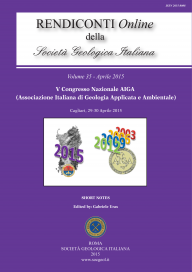
The influence of climate variability and land use variations on the occurrence of landslide events (Subappennino Dauno, Southern Italy)
Teresa Lonigro (a), Francesco Gentile (b) & Maurizio Polemio (a)
(a) CNR IRPI, Via G. Amendola 122/I, 70126 Bari, Italy. E-mail: m.polemio@ba.irpi.cnr.it
(b) University of Bari "A. Moro", Bari, Italy.
Volume: 35/2015
Pages: 192-195
Abstract
The aim of the paper is to describe the results of the application of a methodology based both on the use of time series analyses and of geospatial analyses of monthly climatic data (rainfall, wet days, rainfall intensity, and temperature), annual maximum of short-duration rainfall (from 1 hour to 5 days), and historical modification of land use in order to characterise the effects of these variables on the occurrence of landslide events. The methodology was applied in the Subappennino Dauno area, located on the eastern margin of the Southern Apennines thrust belt (southern Italy). Despite the decreasing trend of rainfall and rainfall intensity and the increasing trend of temperatures and wet days, there is an increasing trend of landslide occurrence, highlighting the negative effect of anthropogenic modifications and the mismanagement of landslide-prone areas. This hypothesis was confirmed by comparing the distribution of landslides with the land use variations data (especially urban areas and wooded areas) collected from 1930 to 2006.
Keywords
Get Full Text